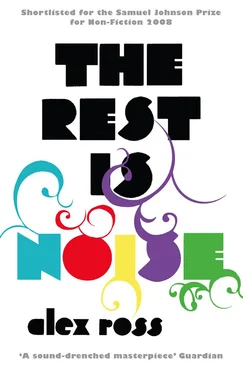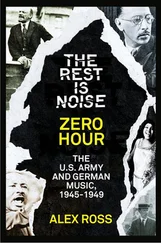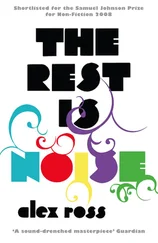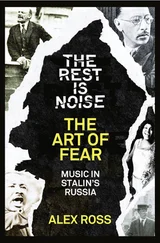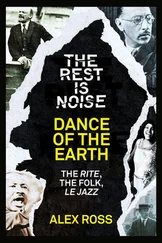The reception of Black, Brown and Beige exposed many of the same anxieties over the mixing of races and genres that had shadowed Porgy and Bess. Aesthetic policemen on both sides of the classical-jazz divide effectively united in casting doubt on this latest attempt at “hybridic fusion.” The composer, critic, and future novelist Paul Bowles, writing in the New York Herald Tribune, called Ellington’s piece “formless and meaningless … a gaudy potpourri of tutti dance passages and solo virtuoso work.” He concluded that “the whole attempt to fuse jazz as a form with art music should be discouraged.” The producer and critic John Hammond, speaking for jazz purists, complained that Ellington had deserted “hot” jazz and fallen under highbrow influence.
Disappointed by the criticism, Ellington nonetheless persisted in employing extended forms. He and Strayhorn later put together a masterpiece of a film score for Anatomy of a Murder and a commanding series of jazz suites. Such Sweet Thunder, a twelve-movement 1957 work, took its title from some lines in A Midsummer Night’s Dream, and they nicely sum up Ellington’s aesthetic: “I never heard / So musical a discord, such sweet thunder.”
In the 1967 television documentary On the Road with Duke Ellington, the grand old man of jazz was asked why he still toured the country with his band. Sitting in the back of a limousine on the way to the next date, Ellington replied: “Anyone who writes music has got to hear his music … There used to be days years ago when people would come out of conservatory, after investing the greater part of their lives, maybe ten years, and many times more, and … mastered all the devices of the masters and they’ve written symphonies, concertos, rhapsodies, and never got to hear them.” When he said this, Ellington might have been thinking of Will Marion Cook, or of Will Vodery, or of the “ex-colored” composer Maurice Arnold, or of any of the other invisible men. Cook dreamed of a “black Beethoven”; Ellington carved out his own brand of eminence, redefining composition as a collective art. Carnegie Hall was a hoot, but he didn’t need it.
Once, when the critic Winthrop Sargeant expressed the hope that jazz composers might rise to classical eminence, the Duke issued a gently devastating riposte, saying, in essence, thanks but no thanks: “I was struck by Mr. Sargeant’s concluding statement, that given a chance to study, the Negro will soon turn from boogie woogie to Beethoven. Maybe so, but what a shame!”
5 APPARITION FROM THE WOODS
The Loneliness of Jean Sibelius
Composing is a difficult business. “Desperately difficult,” says the devil in Doctor Faustus. It is a laborious traversal of an imaginary landscape. What emerges is an artwork in code, which other musicians must be persuaded to unravel. Unlike a novel or a painting, a score gives up its full meaning only when it is performed in front of an audience; it is a child of loneliness that lives off crowds. Nameless terrors creep into the limbo between composition and performance, during which the score sits mutely on the desk. Hans Pfitzner dramatized that moment of panic and doubt in Palestrina, his “musical legend” about the life of the Italian Renaissance composer. The character of Palestrina speaks for colleagues across the centuries when he stops his work to cry, “What is the point of all this? Ach, what is it for? What for?”
Jean Sibelius may have asked that question once too often. The crisis point of his career arrived in the late 1920s and the early ’30s, when he was being lionized as a new Beethoven in England and America and dismissed as a kitsch composer in the taste-making Austro-German music centers. The contrasts in the reception of his music matched the manic-depressive extremes of his personality—an alcoholic oscillation between grandiosity and self-loathing. Sometimes he believed that he was in direct communication with the Almighty—“For an instant God opens his door,” he wrote in a letter, “and His orchestra plays the Fifth Symphony”—and sometimes he felt worthless. In 1927, when he was sixty-one years old, he wrote in his diary, “Isolation and loneliness are driving me to despair … In order to survive, I have to have alcohol … Am abused, alone, and all my real friends are dead. My prestige here at present is rock-bottom. Impossible to work. If only there were a way out.”
Конец ознакомительного фрагмента.
Текст предоставлен ООО «ЛитРес».
Прочитайте эту книгу целиком, купив полную легальную версию на ЛитРес.
Безопасно оплатить книгу можно банковской картой Visa, MasterCard, Maestro, со счета мобильного телефона, с платежного терминала, в салоне МТС или Связной, через PayPal, WebMoney, Яндекс.Деньги, QIWI Кошелек, бонусными картами или другим удобным Вам способом.
